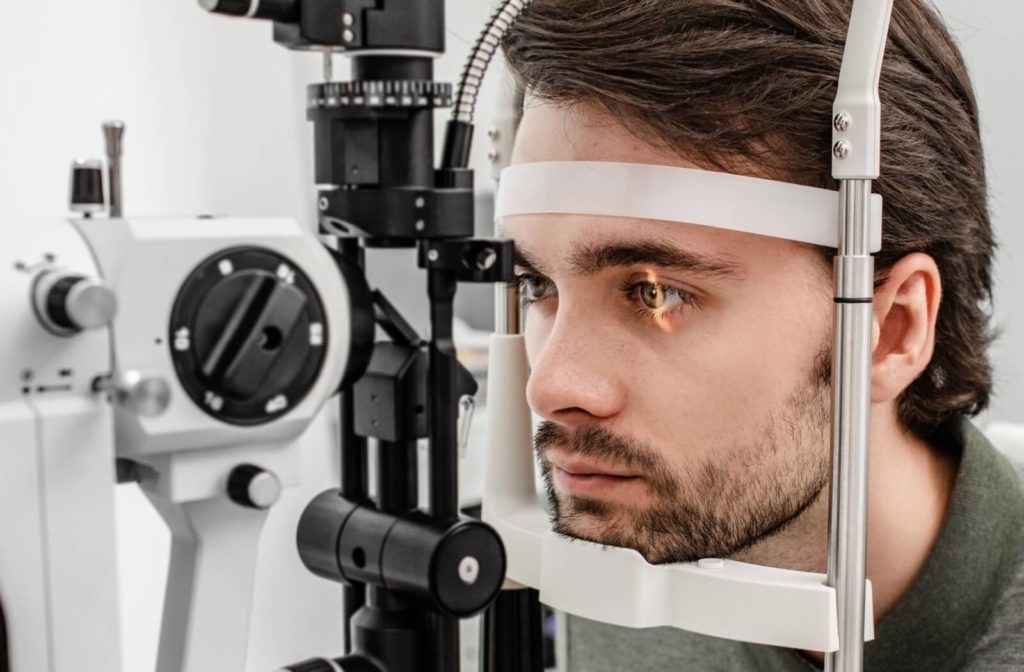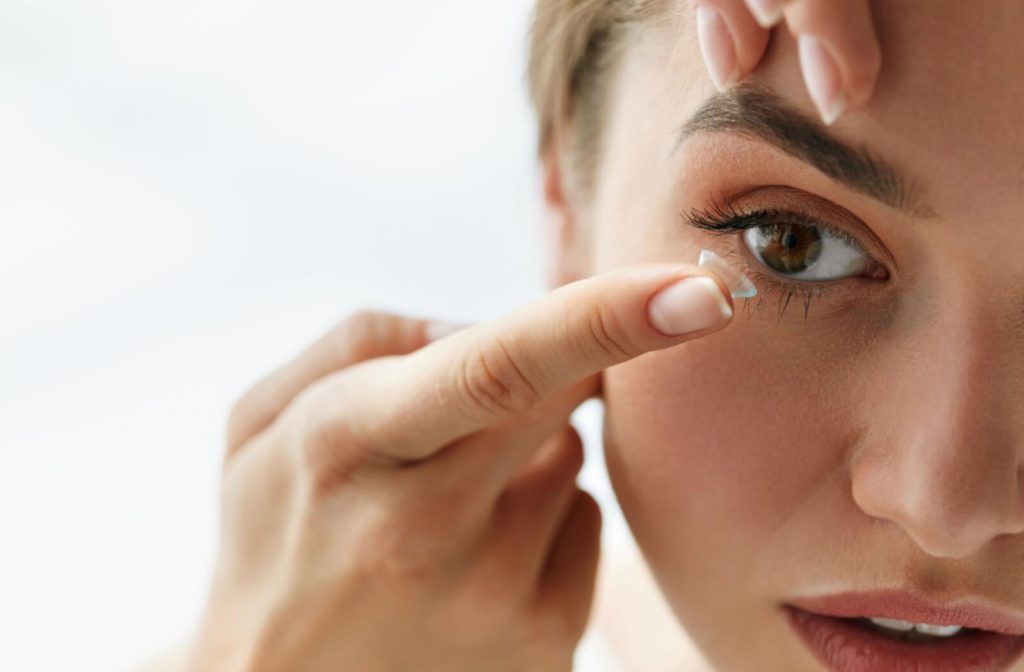Contact lenses are popular with patients who don’t want to rely on glasses. However, reading glasses can become necessary with age, and you may need them even if you already wear contact lenses. Thankfully, you can avoid wearing reading glasses over your contacts by investing in a pair of multifocal contact lenses.
Multifocal contacts combine multiple lens powers into a single lens, helping patients see clearly from near and far distances. They feature different designs that help gradually shift vision between the different lens powers. These lenses are typically ideal for treating conditions like presbyopia and myopia progression.
Multifocal lenses may be right for your needs, and your eye doctor can help determine this during a contact lens exam and fitting.
What Are Multifocal Contact Lenses?
Multifocal contacts are specialty contact lenses with multiple prescriptions in a single lens. Someone struggling with blurry vision from different distances can wear multifocal lenses without switching between pairs of glasses.
While these lenses aren’t the best fit for everyone, it’s always worth speaking with your optometrist to discuss your options and determine what works best for you.
Some of the conditions multifocal contact lenses can help address include:
- Astigmatism: Astigmatism is a refractive error causing blurry vision from multiple distances. It occurs when the cornea or lens has a unique shape, causing light to bend incorrectly as it enters the eye.
- Presbyopia: Presbyopia is a common age-related condition where your eye’s lens becomes stiffer and less flexible. It causes issues with near vision for patients in their 40s and older, and many require reading glasses to see clearly when focusing on nearby images. Multifocal lenses help limit the need for multiple sets of glasses.
- Myopia: Myopia occurs when nearby images appear clearly, but faraway objects look blurry. It commonly develops in childhood and can progress with time, affecting vision. Multifocal lenses can help children with myopia slow myopic progression.
How Do Multifocal Contacts Work?
Multifocal lenses have multiple prescriptions in one lens, providing clear vision from different distances. Depending on the reason for having multifocal lenses, they may help with near and far vision due to presbyopia or help children slow myopic progression. These lenses typically provide a smooth transition between the different lens powers.
The design of multifocal lenses can differ—the two main designs being aspheric and concentric lenses:
- Aspheric multifocal: Aspheric designs have the middle of the lens dedicated to distance vision, while the outer edges of the lens correct near vision. These designs offer a subtle shift between lens powers.
- Concentric multifocal: Concentric designs have one lens power in the center of the lenses with alternating rings surrounding it. The design looks like a bullseye, with near and distance prescriptions alternating around the lens’ center.
How Can You Get Multifocal Lenses?
You can get multifocal contact lenses by booking a contact lens exam and fitting. Similar to an eye exam, your contact lens exam includes a comprehensive look at your vision and eye health. Your optometrist assesses your visual acuity, determines your prescription, and examines your eyes to identify potential eye problems and determine if contact lenses fit your needs.
While these exams are similar, your contact lens exam and fitting include several measurements to ensure your contact lenses fit comfortably. Poorly fitted contact lenses can lead to discomfort and other problems.
After completing your exam and fitting, your eye doctor will recommend the contact lenses they feel best to meet your needs, whether it’s multifocal lenses or another option. They’ll teach you how to properly care for your lenses and safely insert and remove them. Contact lenses are medical devices that can lead to eye infections if not properly cared for, so following daily cleaning and storing routines is key.
Take Care of Your Contact Lenses
Contact lenses are an excellent option for many patients but they require proper care and maintenance. Taking good care of your contact lenses helps them stay comfortable, clean, and effective.
The following tips can help you care for and maintain your contact lenses:
- Follow your eye doctor’s instructions for wearing, removing, and cleaning your contacts
- Don’t swim or shower with your contact lenses in
- Never sleep with contacts in unless you’re told otherwise by your eye doctor
- Wash your hands before and after handling your contacts
- Don’t reuse your contact lens solution
- Replace your contact lenses on their recommended schedule
- Don’t wear expired contact lenses

Find the Right Contact Lenses for Your Needs
Contact lenses can be what you need if you want clear vision without wearing glasses. If you have presbyopia, multifocal lenses can help you see clearly from all distances. Multifocal contacts can benefit many patients, and we can determine your eligibility during a contact lens exam and fitting.
Contact us to schedule an appointment at one of Total Vision’s locations. We can’t wait to help you find a comfortable pair of contact lenses.



